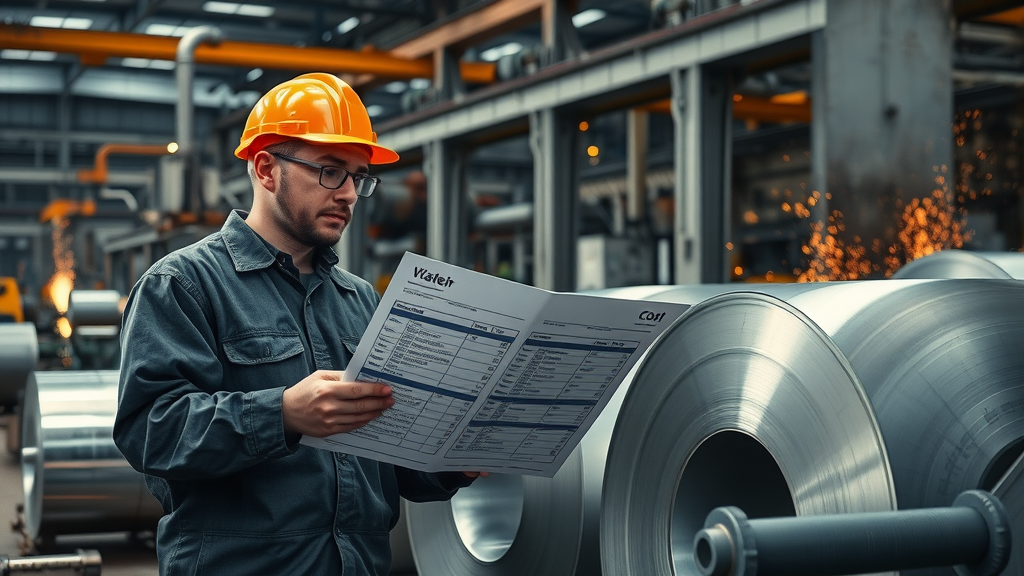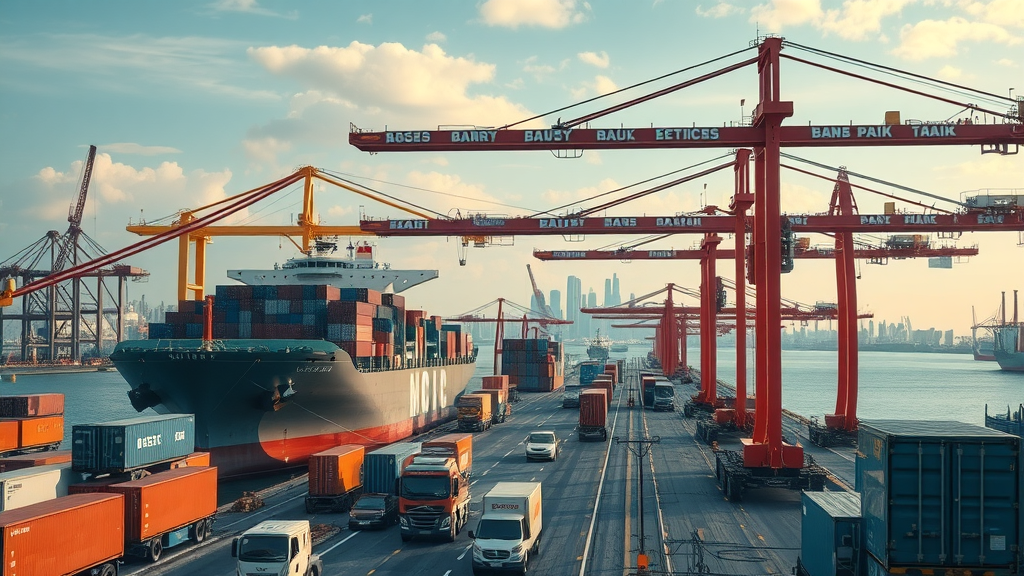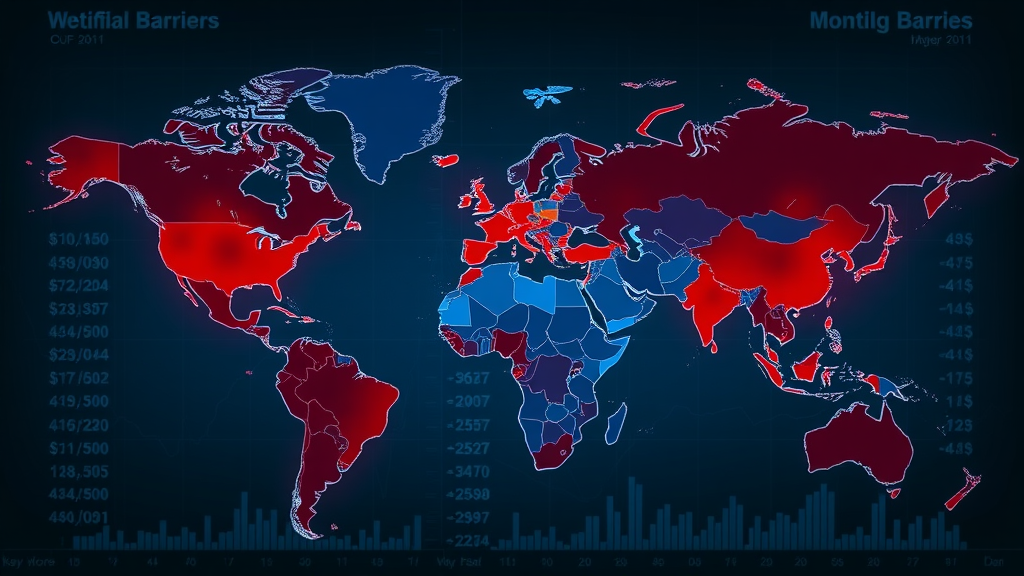Did you know that a single percentage point increase in a country's average effective tariff rate can boost domestic consumer prices by up to 1.5%? If you've been following the headlines on international trade and trade wars, you’ve likely seen the storm of debate about whether trade tariffs and price levels are truly connected, or just a calculation lost in political posturing. In this article, we’ll spotlight the unseen levers driving global market shifts, untangle misconceptions about tariff rates, and offer an unfiltered opinion on who really pays the price when the world’s economic titans clash.
With tariffs making bold headlines from the United States to the European Union, understanding their real impact is non-negotiable for consumers, producers, and policymakers alike. Are tariffs just bargaining chips in a trade war, or do they fundamentally alter the lives of everyday people? Let's uncover the crucial link between trade tariffs and price levels — and why it matters now more than ever.

Revealing the Unseen: How Trade Tariffs and Price Levels Drive Global Markets
- Understand the key mechanisms connecting trade tariffs and price levels
- Learn the difference between an average effective tariff and a specific tariff rate
- Analyze real-world data from the trade war era
- Discover the impact of steel and aluminum tariffs on consumer prices
- Gain insight into the roles of retaliatory tariffs, the European Union, and U.S. policies
- Find out why the effective tariff rate matters for international trade bargains
Defining Trade Tariffs and Price Levels in the Modern Economy
Trade tariffs and price levels are terms often thrown around in policy debates and media stories, but rarely are they defined in ways the average reader finds actionable. Trade tariffs , fundamentally, are taxes levied on imported or exported goods, sculpted by governments to either protect local industries or generate revenue.
Meanwhile, price levels represent the average cost of goods and services in an economy, directly felt by both consumers and producers. In today’s interconnected marketplace, shifts in trade tariffs — even by a few percentage points — can send immediate ripples through global supply chains, translating into price increases on everyday products, from cars to canned goods.
What’s critical is that these two forces are not mere numbers on a spreadsheet; they are the silent architects of our wallets and the blueprint for international trade. For instance, a tariff increase imposed by the Trump administration on imports from China didn’t just impact manufacturers — consumers from Canada and Mexico to the United States felt the pinch in tangible price hikes. Recognizing these definitions isn’t about passing a vocabulary test. Instead, it’s about tracing the real threads that bind our shopping choices and corporate bottom lines to the world’s trade policies.

What is a trade tariff in simple terms?
Answer: A trade tariff is a tax imposed by a government on imports or exports of goods.
To put it plainly, a trade tariff is a border tax. Nations—such as the United States or those in the European Union —apply tariffs to specific products entering or leaving the country, making foreign goods more expensive or domestic products more competitive. This seemingly straightforward tool is one of the oldest levers in economic policy, but its effects in international trade run far deeper, influencing everything from trading partner relationships to the cost of a family’s weekly groceries.
What are price levels and why do they matter for consumers and producers?
Price levels indicate the established cost of a basket of goods and services—and they matter because they directly shape affordability and competitiveness. For consumers , higher price levels mean more wallet strain at cash registers; for producers , it can mean higher input costs and altered profit margins. Notably, changes in average effective tariff rates often trigger visible movements in these price levels, pushing everyday items like electronics, food, and vehicles beyond the reach of many households, while also challenging businesses to rethink supply chain strategies.

Trade War, Trade Tariffs and Price Levels: The Domino Effect
The late 2010s ignited what many dubbed the modern trade war , most notably between the United States and China. At the heart of this conflict were tariff rate escalations: the Trump administration imposed steep tariffs on steel and aluminum as well as thousands of products from China. These moves were soon met with retaliatory tariffs from trading partners. The results were clear—price levels rose, supply chains scrambled, and once-stable trade flows suddenly grew volatile.
Throughout this trade war, average effective tariff rates in the United States surged, rising from around 1.5% to over 3%. Even modest increases in the tariff rate led to widespread price increases on imported goods, with industries such as automotive, electronics, and agriculture particularly hard-hit. The domino effect was undeniable: price levels spiked, export demand softened, and both consumers and producers bore the brunt of changing policies.
The story, however, is not just about the numbers. At the core is public confidence: every time the effective tariff rate shifted, businesses held their breath, waiting to see how the next chapter of the ongoing trade war would rewrite their costs, prices, and international relationships.
Understanding Tariff Rate, Effective Tariff, and Their Role in the Trade War
Tariffs come in many disguises—the headline tariff rate versus the more nuanced average effective tariff . During the trade war , both became buzzwords. The average effective tariff is not simply the announced or advertised rate; rather, it takes into account all duties applied across all imports, offering a more accurate picture of a country’s actual trade barrier.
For example, when the Trump administration imposed new tariffs on steel, aluminum, and a swath of other goods, the average effective tariff rate often increased by several percentage points—far more impactful than any single tariff rate sounds in isolation. This comprehensive figure is what ultimately filters through to both price levels and global supply chains.
The lesson? Watching the average effective tariff rate tells us more about the real-world effects on international trade , price changes, and economic sentiment than big policy announcements alone. It’s a key gauge for business strategy and household budget planning alike.
Presidential Influence: President Trump and Tariff Rate Shocks
'The only thing more expensive than a tariff is pretending it doesn’t exist.' – Economist’s reflection during the trade war.
Few modern leaders have wielded tariffs as assertively as President Trump . The tariff rate shocks of his administration were not just fiscal measures—they were strategic chess moves in a broader contest for economic supremacy. By raising tariffs on imports from China, Canada, Mexico, and Europe, the administration sought to force trading partners back to the negotiating table.
However, sudden tariff increases triggered market uncertainty. Industrial players, particularly in steel and aluminum , faced mounting input costs, while retailers scrambled to pass price hikes onto consumers. The average effective tariff rate soared, sparking debate on whether these short-term strategies would lead to lasting growth or merely fuel higher price levels and economic friction.
As history proved, President Trump’s tariff policies illustrated a vital principle: abrupt changes in trade tariffs and price levels can be as destabilizing as they are headline-grabbing, requiring careful analysis of both policy intent and everyday outcomes.

How Do Trade Tariffs and Price Levels Interact?
The relationship between trade tariffs and price levels is dynamic and mutually reinforcing. When a government imposes or raises a tariff rate , foreign goods become more expensive—the cost is often passed directly to consumers and producers in the form of higher prices. The average tariff paints a more complete picture, as it mixes both specific and ad valorem tariffs to give a reliable overview of how price levels will react across a nation’s entire basket of imports.
For example, a one point increase in average effective tariff rate can lead to price hikes that ripple through complex supply chains, from electronics and vehicles to household appliances. This isn’t just theoretical—real data from the last trade war shows that even minor adjustments in tariff schedules fueled broad-based price increases , affecting retail shelves and wholesale suppliers alike.
The Mechanism: From Tariff Rates to Average Effective Tariff
Understanding how tariffs transform into price changes begins with the distinction between tariff rates and the average effective tariff . The former is the officially announced rate—think 25% on steel or 10% on aluminum—while the latter represents the true weighted average across all taxed imports. This average effective tariff can shift dramatically based on both new policies and retaliatory moves from trading partners.
When policymakers, such as those in the European Union or United States , make small tweaks to the tariff rate , the compound effect on the average effective tariff rate can be profound. Businesses pay more for inputs, price levels creep upward, and, in turn, domestic and global competitiveness adjusts. For nations relying on seamless trade, these shifts are not easily ignored.
| Country | Tariff Rate Before (%) | Tariff Rate After (%) | Average Effective Tariff (%) | Price Level Increase (%) |
|---|---|---|---|---|
| United States | 1.5 | 3.0 | 2.8 | 1.7 |
| European Union | 1.1 | 1.9 | 1.7 | 1.2 |
| China | 3.2 | 5.6 | 5.0 | 2.3 |
Steel and Aluminum: Showcasing High-Profile Tariff Impacts
Steel and aluminum tariffs have served as headline examples of how a focused tariff increase can reverberate through a country’s economy. When the U.S. announced a 25% tariff on steel imports, the average effective tariff for the metals sector more than doubled, with price levels responding almost instantly. Construction, automotive, and even beverage companies cited cost jumps of up to 10% on goods directly tied to steel or aluminum inputs.
For producers , these shocks meant renegotiating supply contracts, rebalancing inventory, and absorbing (or passing on) new cost burdens. For consumers , the end result was plain at checkout: more expensive cars, appliances, and packaged goods. The lesson? Singular tariff actions—especially on key industrial goods—can rapidly cascade into the wider economy, proving that trade tariffs and price levels are inseparable in practice.

The Ripple Effect: Retaliatory Tariffs and International Trade
When one nation raises the tariff rate , it’s seldom a solo act. In international trade, higher tariffs are often met with retaliatory tariffs from trading partners. This tit-for-tat dynamic intensifies impact on average effective tariff rates , disrupts established supply chains, and amplifies price level increases across regions and industries. The trade war between the U.S. and China, for instance, saw tariffs imposed on over $300 billion worth of imports, prompting a flurry of reciprocal tariffs on American goods like soybeans, whiskey, and motorcycles.
This escalation triggers predictable economic consequences: not only do affected goods become pricier domestically, but export competitiveness takes a hit, and global supply chains become tangled in uncertainty. Producers and retailers face compounded costs as they search for alternative partners, adapt to new tariffs on imports from China, and offset diminished demand abroad.
How Retaliatory Tariffs Impact Domestic Price Levels
Retaliatory tariffs are more than symbolic—they bite deep into domestic price levels by closing off lucrative export markets and forcing buyers to seek less-efficient alternatives. When the European Union, Canada, and China responded to U.S. tariffs with their own levies, price increases on everything from dairy to denim rippled through retail and wholesale channels. The result? Shrinking sales for exporters, higher costs for importers, and a fog of uncertainty for both producers and consumers.
Crucially, retaliatory tariffs often tip the delicate balance of international trade . Instead of just limiting foreign competition, they also limit access to essential global markets, pushing price levels up, squeezing profits, and making even everyday products a touchstone for fractured international relationships.
European Union’s Response: Raising Effective Tariff Rate in Global Trade
The European Union serves as a masterclass in measured retaliation. Instead of blanket tariffs, the EU targeted specific U.S. products—peanut butter, motorcycles, bourbon—and took to the World Trade Organization (WTO) to challenge U.S. measures legally. EU policy choices raised their own effective tariff rate , but in a way designed to pressure political negotiation rather than escalate prices across the board.
The EU also sought to diversify by strengthening trade agreements with Asia and Latin America. By selectively applying retaliatory tariffs and seeking new trading partners, the EU mitigated price spikes and buffered its own economic ecosystem against the chaos of a full-scale trade war.
- Targeted Tariffs on U.S. Goods
- Legal Action at WTO
- Diversifying Import Partners

Trade Tariffs, Price Levels, and Economic Growth: The Evidence
Global economic data is unambiguous: trade tariffs and price levels move in tandem, often dragging GDP growth down in their wake. Countries with a high average effective tariff rate routinely experience dampened economic output as consumer prices climb and export opportunities dwindle. The United States saw its GDP growth rate slow by more than 0.5 percentage points during the peak of tariff escalation periods, while China and the European Union suffered lower export growth and increased costs for key industries.
In turn, higher tariff rates and jittery price levels deter investments, prompt layoffs, and force businesses to rethink global supply chain strategy. The end result is often stagnation instead of stimulus—the “tariff tax” rarely spurs the economic revival promised by its proponents and instead generates a cycle of higher spending and lower growth.
Analysis: U.S. Average Effective Tariff, Effective Tariff Rate, and GDP Trends
'Increased tariffs rarely produce the economic growth they promise.' – Trade Policy Analysis, 2023
Focusing on the United States, the correlation between average effective tariff and GDP performance is stark. As the effective tariff rate jumped following the Trump administration's trade war actions, immediate indicators—industrial output, business investment, and consumer sentiment—reflected the strain. Sectors most exposed to import and export flows, such as manufacturing and agriculture, were particularly vulnerable. More worryingly, these economic tremors persisted even as new trade deals sought to bring relief, highlighting the lagging effect of trade friction on growth momentum.

The Role of Trade Deals in Mitigating Tariff Impacts on Price Levels
Having seen the upheaval tariffs can unleash, countries have increasingly turned to trade agreements as shock absorbers. The right trade deal can lower the effective tariff rate , stabilize price levels, and offer long-term certainty to businesses and consumers alike. For example, after fierce negotiations, both the U.S.-Mexico-Canada Agreement (USMCA) and revised EU trade deals helped recalibrate tariff schedules, trim average effective tariffs, and restore cross-border commerce.
How Negotiated Trade Deals Lower Tariff Rates and Average Effective Tariff
A successful trade deal operates by scrapping or reducing tariff rates , streamlining customs processes, and harmonizing standards. Such negotiations are not just about fiscal calculus—they’re about building trust and predictability among trading partners. As tariffs disappear or are eased, price levels stabilize, exporters regain access to lucrative markets, and supply chains heal from trade war bruises. The EU’s new agreements with Asia resulting in a percentage point decrease in effective tariffs serve as a powerful example of how deliberate policy can lower costs and spur economic growth.
'Trade deals turn borders from walls into bridges.' – European Union Trade Official

Consumers and Producers: Who Pays When Trade Tariffs and Price Levels Shift?
There’s little debate— consumers are often the first to feel the heat when trade tariffs rise, as price levels for imported goods tick upward. Retailers and wholesalers facing higher costs for goods like electronics, apparel, and automobiles have two options: accept lower margins, or pass the increase directly onto shoppers. U.S. retail data following tariff hikes on imports from China confirm that price increases are a near-universal response.
Consumers Face Higher Prices: Retail and Wholesale Data
A closer look at retail trends unveils a domino effect: from grocery store shelves to home improvement centers, higher tariff rates mean higher consumer prices. Even small percentage point increases in tariffs on tubes of toothpaste, refrigerators, or computers can lead to a price level surge, leaving everyday shoppers with fewer choices and lighter wallets. Wholesale buyers, too, navigate higher acquisition costs, which often ripple outward across local economies.
Producers and Supply Chains: The Struggle with Steel and Aluminum Tariffs
Producers are no less impacted. When steel and aluminum tariffs went into effect, industries spanning automotive, construction, and food processing faced rapidly rising input costs. Supply chain managers scrambled to find new sources or renegotiate with existing suppliers, while some manufacturers even delayed investments or restructured entire operations to adapt. The vulnerability to trade tariff shocks became a stark reality for many businesses once reliant on predictable, low-cost imports.
- Automotive
- Electronics
- Agriculture
- Textiles
- Construction

What is the relationship between tariffs and consumer prices?
Answer: Tariffs generally cause consumer prices to rise due to increased import costs passed to buyers.
Each time a tariff is imposed or raised, businesses importing those goods must choose: absorb the higher cost, or pass it onto consumers . Here’s the bottom line—most choose the latter, leading to almost immediate price increases at the retail level. This is why seemingly abstract changes to the average effective tariff rate end up becoming a front-line issue for families and small businesses alike.

How are the tariffs affecting the economy?
Answer: Tariffs can disrupt supply chains, lower GDP growth, and prompt retaliation from trading partners.
It’s not just higher prices. Tariffs are a triple threat: they disrupt finely tuned supply chains , slow GDP growth by limiting market efficiency, and provoke retaliatory tariffs that restrict export access. Evidence from recent years makes clear that reliance on quota-based and percentage point tariff schemes dampens overall economic momentum—not just at the macro level, but in neighborhoods and factories across the world.
What are the effects of trade tariffs?
Answer: Trade tariffs can diminish export competitiveness, increase prices, and foment trade disputes.
Trade tariffs undermine the global competitiveness of a nation’s exports, erode profit margins, and lay the groundwork for protracted disputes among trading partners. The ultimate losers? Everyday citizens and small businesses who must contend with fewer choices, higher costs, and a nervous sense that international trade may bring new shocks tomorrow.
Trade Tariffs and Price Levels: Frequently Asked Questions
- How do tariff rates vary between industries?
- Are tariffs always permanent?
- What alternatives do governments use besides tariffs?
- Can individual consumers influence tariff policy?
Expert Responses to Common Concerns about Trade Tariffs and Price Levels
How do tariff rates vary between industries? Tariff rates are often tailored based on government priorities, meaning high-potential or sensitive industries—like steel and electronics—can face higher tariff burdens compared to less-strategic sectors.
Are tariffs always permanent? No, tariffs are policy tools and frequently renegotiated as circumstances change. Trade deals may eliminate or lower tariffs, while new policies or trade disputes can introduce new ones.
What alternatives do governments use besides tariffs? Besides tariffs, governments utilize quotas, subsidies, currency manipulation, and regulatory standards as tools to manage trade flows and protect domestic industries.
Can individual consumers influence tariff policy? While direct influence is limited, consumers can voice opinions to policymakers, vote for trade-friendly representatives, or join advocacy groups to impact larger trade debates.
Looking Ahead: Will Trade Tariffs and Price Levels Continue to Shape International Trade?
Possible Scenarios for the Future of Effective Tariff Rate and Price Levels
We stand at a crossroads. If protectionist sentiment prevails, average effective tariff rates could rise further, compelling companies to localize supply chains while risking higher consumer prices. However, diplomatic breakthroughs—especially centered around new trade deals —could reverse the trend, stabilizing price levels and reinvigorating international trade .
Whether today’s volatility gives way to new stability depends on the ability of policymakers to negotiate bold, forward-thinking agreements with trading partners worldwide. The powerful interplay between trade tariffs and price levels will remain a defining force shaping economic growth, investment flows, and household prosperity for decades to come.
What policymakers, consumers, and business owners must watch next
Monitor shifts in the effective tariff rate , keep an eye on evolving trade partnerships, and stay prepared for sudden policy pivots. For business owners, contingency planning and market diversification are critical. For consumers, championing transparent trade policy and remaining adaptable will ensure resilience as international trade continues to transform the shelves—and bottom lines—of tomorrow.

Key Insights About Trade Tariffs and Price Levels in Global Commerce
- Trade tariffs and price levels are deeply intertwined in global markets
- Small changes in tariff rate can trigger large shifts in effective tariff and price levels
- Major trade wars, such as those initiated by the U.S. and European Union, show clear price impacts
- Retaliatory tariffs multiply the effect, affecting both local and global supply chains
- International negotiations and trade deals offer a pathway to stability
Have insights to share on global trade? Let's talk—call us at 203-271-7991 to explore contributing an article.
Conclusion: Stay alert to changes in tariff policy, advocate for evidence-based trade deals, and plan ahead—because the impact of trade tariffs and price levels will only grow more pivotal in the years ahead.
To deepen your understanding of how trade tariffs influence price levels, consider exploring the following resources:
-
Tariffs and Consumer Prices: Insights from Newly Matched Consumption-Trade Micro Data by the Federal Reserve Bank of Atlanta offers a detailed analysis of how various U.S. tariff scenarios could raise consumer prices on everyday retail purchases, such as food and beverages, by 0.81% to 1.63%, depending on the extent of cost pass-through.
-
The Impact of Tariffs on Inflation from the Federal Reserve Bank of Boston estimates that the 2018 tariffs accounted for 0.1 to 0.2 percentage points of core PCE inflation, highlighting the measurable impact of tariffs on overall inflation rates.
These studies provide empirical evidence on the direct relationship between trade tariffs and consumer price levels, illustrating how policy changes can affect everyday expenses.
 Add Row
Add Row  Add
Add 




Write A Comment